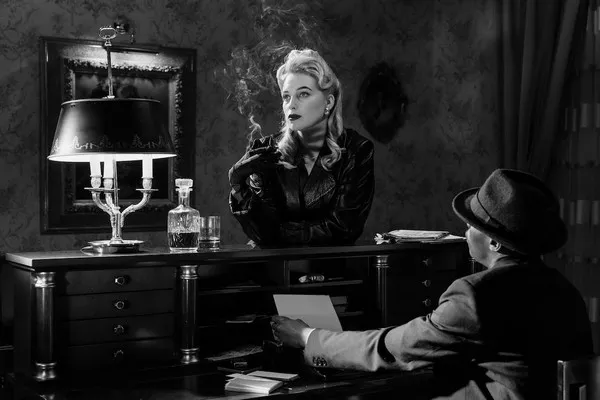Season 7 of “Rick and Morty” is the first volume of the Adult Swim animated sitcom, a “Back to the Future” riff following the adventures of a mad scientist and his bumbling grandson, not to mention co-creator Justin Roiland as the voice of both title characters. The network fired Roiland in January after the actor was accused of domestic violence; although the charges have since been dropped, an NBC News report last month alleged a pattern of inappropriate sexual behaviour. Meanwhile, the roles of Rick and Morty were recast with lookalikes Ian Cardoni and Harry Belden, a months-long saga that culminated with the debut of a Roiland-free show on Sunday.
All this behind-the-scenes upheaval might suggest that Rick and Morty would return as a very different show. But “How Poopy Got His Poop Back” is almost pointedly normal, reuniting various fixtures of the “Rick and Morty” universe – not just Rick and Morty themselves, but also Birdperson (co-creator Dan Harmon), Squanchy (Tom Kenny) and Gearhead (Scott Chernoff) – to show how much remains unchanged, from the larger ensemble to the juvenile potty humour. The episode even focuses on Mr Poopybutthole, Roiland’s biggest former voice role outside of the show’s core duo, who is on a post-divorce bender until his friends reluctantly stage an intervention with the help of Hugh Jackman. Voice actor John Allen now delivers the character’s telltale “Ooh wee!”
Next week’s episode, which has also been previewed by the critics, continues the trend; it’s a body-swapping farce, heavy on sight gags and light on any sense of outsized importance. For a show that’s still relentlessly meta and self-referential (“I guess you didn’t see Season 4, Episode 3,” Mr Poopybutthole trills in a callback to the season premiere), there’s at least one fourth-wall panel that remains firmly intact. Belden and Cardoni really are soundalikes; there are subtle differences in the vocal performances when doing the aural version of a squint, but you have to actively listen for them. There’s no equivalent to the way Big Mouth handled the switch from Jenny Slate to Ayo Edebiri as the voice of biracial tween Missy Foreman-Greenwald, with an in-story explanation that drew attention to both the change and the reasons behind it.
It’s possible, even likely, that many fans will tune into season 7 without knowing that Roiland has left the show. In fact, that’s the point of the soundalike approach; at a panel at San Diego Comic-Con this summer, executive producer Steven Levy expressed the hope that his colleagues’ hard work wouldn’t be “overshadowed” by the Roiland controversy, a sentiment echoed by Harmon showrunner Scott Marder in an interview with The Hollywood Reporter. Ironically, the new episodes do the opposite. Instead of showing Roiland’s impact on his creation through his absence, Season 7 shows how Rick and Morty has matured into a machine built to outlast any individual contributor.
In retrospect, the biggest turning point in the nearly decade that Rick and Morty has been on the air wasn’t Roiland’s exit. It may have been Harmon and Roiland handing over showrunning duties to producer Mike McMahan before Season 3; it may have been the mega-renewal for a staggering 80 episodes that Adult Swim announced in 2018, ensuring the show’s duration through Season 10. (Marder took over as showrunner in Season 4 and has remained in the role ever since; the writers are currently in the process of drafting Season 9.) The latter development had an immediate, tangible effect on Rick and Morty, which moved away from its long-term, serialised story of Rick’s reconciliation with his estranged relatives and towards stand-alone adventures.
Seasons that used to drip out every other year became more frequent, with a consistent annual schedule; more openly emotional scenes, like Susan Sarandon’s first appearance as therapist Dr Wong, receded into the background. “Rick and Morty became less like BoJack Horseman, to which it was often compared for its shared sense of cerebral melancholy, and more like Archer or The Simpsons. Not coincidentally, the former style is more closely associated with auteur figures who shape a show to fit their larger vision. The less “Rick and Morty” adhered to the auteur model, the less it relied on its perceived auteurs.
Meanwhile, the Rick and Morty creators have moved on to other projects – Roiland’s Solar Opposites and Koala Man, Harmon’s Strange Planet and Krapopolis. Additional reports following Roiland’s firing indicated that his creative contributions to Rick and Morty were minimal beyond his voice acting. Long before Roiland’s official departure, the show had adjusted to functioning without him. (“When he left, he really only left in name,” Marder told THR.) It’s even adapted to working with much less day-to-day involvement from Harmon, who only weighed in on the recasting process toward the end. Sunday’s premiere even omitted a “created by” credit from the opening sequence. The move may have been intended to avoid name-checking Roiland, but it also underscored what was apparent even before his departure: Rick and Morty is no longer defined by its creators, regardless of their actions outside the show.
























